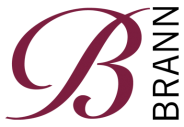2020-12-18:
To monitor a competitor’s patent application is a common and effective way of keeping track of a competitor’s rights and thereby your own Freedom to operate (FTO). In the start up phase of a development project, a novelty/landscaping search is often conducted to obtain an overview of the patent situation. Sometimes it turns out that the project may be at least partly dependent on the outcome of the prosecution of a competitor’s patent application.
The European patent system (EPC) provides an opportunity for a third person (e.g. a competitor) to prevent a patent from being granted or upheld. The most common way is that the third person files an opposition against a patent that the authority (the European Patent Office, the EPO) has granted. This has to be done within 9 months from the date the EPO publishes the grant of the patent. An opposition usually results in an oral proceeding at which the EPO will declare whether the patent should be maintained as granted, maintained in amended form or that the patent is revoked.
Another strategy is to file prior art and arguments against the patent application already during prosecution, a so-called third-party observation. This way of “tipping” the examiner of useful documents can be done anonymously.
One advantage of third-party observations is that it is a relatively cheap way of affecting the outcome of a competitor’s patent application, but most importantly, unlike in an opposition process where the final decision may come after several years, the outcome of a third-party observation is obtained much faster.
A party filing a third-party observation is not part of the proceedings which means that the EPO will not invite said party to file additional comments and the process does not result in an oral hearing. This is the main reason why a third-party observation is cheaper than an opposition. At the same time, the impact of the observation is more uncertain since the understanding of the arguments and the cited documents is fully dependent on the examiner’s interpretation thereof. This uncertainty also seems to be somewhat dependent on at what stage of prosecution the observation is filed.
Our experience is therefore that an observation filed early in the prosecution phase will have a better chance of having a real impact on the outcome of an application. A third-party observation may even be filed during the PCT-phase and will thereby be available to all examiners at the national offices that will later examine the patent application.
Further, if there are documents that the examiner has not found, such as articles, published conference submissions, catalogues, marketing materials etc. that clearly would affect the patentability of the claimed invention, submitting an observation may be an efficient way of making the examine aware of said documents.
Still, a few things to consider prior to filing of a third-party observations are:
-if the patent application despite a submitted third party observation is granted it is much harder to refer to the same prior art document again in a later opposition procedure,
-the proprietor of the patent application is made aware of that a third party is concerned by their application and might prioritize it, and may file divisional applications to secure his position,
-some grounds/arguments are more suitable and have a larger effect during an opposition and can easily be “lost for good” when used in a third-party observation where the applicant may correct/amend the application/claims and thereby overcome your objections, e.g. unallowable amendments (Art. 123(2)EPC).
If you have any questions regarding this article, please contact Basse Asplund.

